Related Research Articles

The Dean Cemetery is a historically important Victorian cemetery north of the Dean Village, west of Edinburgh city centre, in Scotland. It lies between Queensferry Road and the Water of Leith, bounded on its east side by Dean Path and on its west by the Dean Gallery. A 20th-century extension lies detached from the main cemetery to the north of Ravelston Terrace. The main cemetery is accessible through the main gate on its east side, through a "grace and favour" access door from the grounds of Dean Gallery and from Ravelston Terrace. The modern extension is only accessible at the junction of Dean Path and Queensferry Road.

Leith is a port area in the north of the city of Edinburgh, Scotland, founded at the mouth of the Water of Leith. In 2021, it was ranked by Time Out as one of the top five neighbourhoods to live in the world.

This article is a timeline of the history of Edinburgh, Scotland, up to the present day. It traces its rise from an early hill fort and later royal residence to the bustling city and capital of Scotland that it is today.
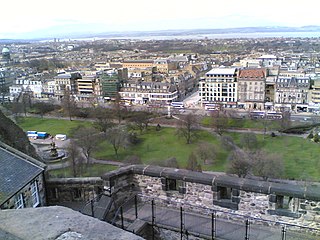
The New Town is a central area of Edinburgh, the capital of Scotland. It was built in stages between 1767 and around 1850, and retains much of its original neo-classical and Georgian period architecture. Its best known street is Princes Street, facing Edinburgh Castle and the Old Town across the geological depression of the former Nor Loch. Together with the Old Town, and West End, the New Town was designated a UNESCO World Heritage Site in 1995. The area is also famed for the New Town Gardens, a heritage designation since March 2001.
The Baldwin Piano Company is an American piano brand. It was once the largest US-based manufacturer of keyboard instruments and known by the slogan, "America's Favorite Piano". It ceased most domestic production in December 2008, moving its total production to China. A subsidiary of Gibson Brands, Inc., current pianos only display the "Baldwin" name and brand with all of the formerly American made upright models being made in Baldwin's Chinese factory.

Bonnington is a district of Edinburgh, the capital of Scotland. The area centres upon an original village which grew up around a ford on the Water of Leith on the old boundary between Edinburgh and the port of Leith. Before the creation of Leith Walk the road via the villages of Broughton and Bonnington, or Wester Road as it appears on some old maps, was one of two roads formerly connecting Edinburgh to Leith; the other being Easter Road. The district lies between the districts of Pilrig and Newhaven.
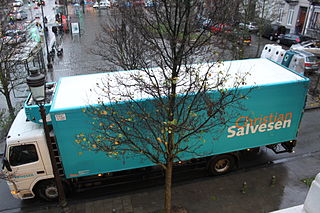
Christian Salvesen was a Scottish whaling, transport and logistics company with a long and varied history, employing 13,000 staff and operating in seven countries in western Europe. In December 2007, it was acquired by French listed transport group Norbert Dentressangle.
Chappell & Co. was an English company that published music and manufactured pianos. Founded by pianist Samuel Chappell, the company was one of the leading music publishers and piano manufacturers in Britain until 1980 when Chappell sold its retail activities to concentrate solely on music publishing.
John Mackay (1774–1841) was a well known and successful ship master and early industrialist in Boston, Massachusetts. John Mackay was born in Boston and he participated in the Mackay family business of shipping started by his father and uncle. He partnered with and financed Alpheus Babcock and Jonas Chickering in early piano manufacturing by using some of his legacy from his wealthy uncle Mungo Mackay.
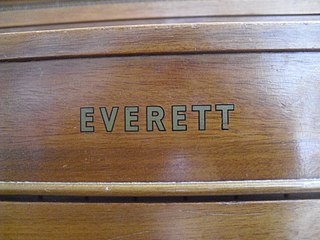
The Everett Piano Company, or simply Everett Piano, was a piano manufacturing company founded by the John Church Company. It was later acquired by Yamaha.
Edinburgh Street Tramways operated a horse-drawn tramway service in Edinburgh between 1871 and 1896, and Leith between 1871 and 1904.
George Small (1782–1861) was a partner of the Scottish piano manufacturing firm of Muir, Wood and Company, an Edinburgh magistrate and a philanthropist.
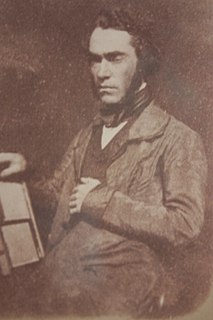
John Muir Wood, was a Scottish musician, piano maker, music publisher and an early amateur photographer.
The Weber Piano Company is a former piano manufacturing company based in New York City and East Rochester, New York from the middle of the 19th century through the beginning of the 20th century, and continued as a division of Aeolian-American at East Rochester, New York until 1985, when Aeolian went out of business.
Crabbie's is a Scottish brand traditionally known for its green ginger wine and blended whiskies produced at John Crabbie & Co's extensive premises in the Leith area of Edinburgh, Scotland. That company has changed its name and its business is unrelated to the original. The brands were bought by Halewood International Ltd and are presently best known for ginger beers manufactured at Halewood's plant in Liverpool. John Crabbie & Company (Wines) Limited was incorporated in May 2006 and changed its name to John Crabbie & Company Limited the following July.

John Croall & Sons were a Castle Terrace, Edinburgh firm of funeral undertakers and carriage hirers founded in 1850 who expanded their business to include coaches, cabs and coachbuilding. In February 1897 the firm was incorporated as John Croall & Sons Limited. After 1960 ownership changed a number of times and the company was liquidated in 1992.
The firm of Alexander Mathieson & Sons was one of the leading makers of hand tools in Scotland. Its success went hand in hand with the growth of the shipbuilding industries on the Firth of Clyde in the nineteenth century and the emergence of Glasgow as the "second city of the Empire". It also reflected the firm's skill in responding to an unprecedented demand for quality tools by shipyards, cooperages and other industries, both locally and far and wide.
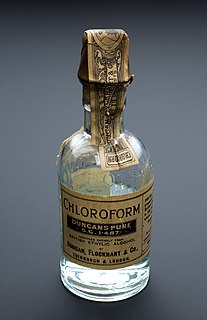
James Duncan FRSE FRCS FRCSE was a Scottish surgeon and manufacturing chemist responsible for much of the British supply of chloroform in the mid-19th century. From 1839 to 1866 he was Director of Duncan Flockhart & Co one of Scotland’s largest chemical manufacturers.
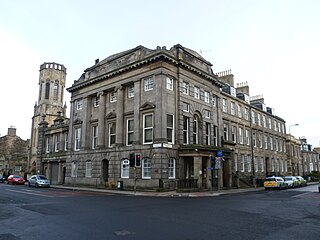
The Old Town Hall is a municipal building in Queen Charlotte Street, Leith, Scotland. The old town hall, which was the meeting place of Leith Burgh Council, is now used as a police station. It is a Category A listed building.

David Jonkin was a Scottish merchant and shipowner. He imported sugar, French wine, Swedish timber, linen from Haarlem, and lint from Poland.
References
- 1 2 3 4 5 Palmieri, Robert (2003). The Piano: An Encyclopedia. New York City, NY, USA: Taylor & Francis. p. 243. ISBN 9780203427026.
- 1 2 3 George Grove; John Alexander Fuller-Maitland; Waldo Selden Pratt; Charles Newell Boyd (1911). Grove's Dictionary of Music and Musicians. New York, Boston, Chicago and San Francisco: The Macmillan Company. p. 561.
- 1 2 3 4 Palmieri, Robert (2003). The Piano: An Encyclopedia. New York City, NY, USA: Taylor & Francis. p. 435. ISBN 9780203427026.